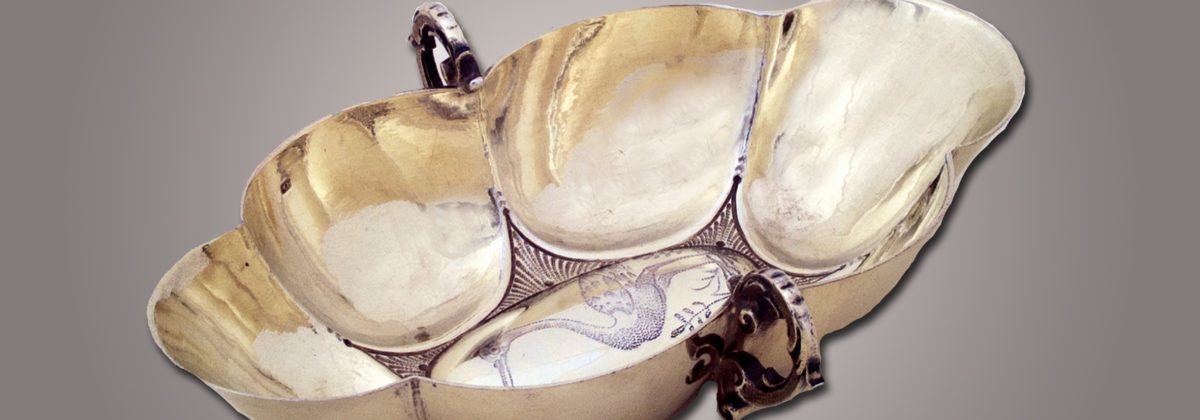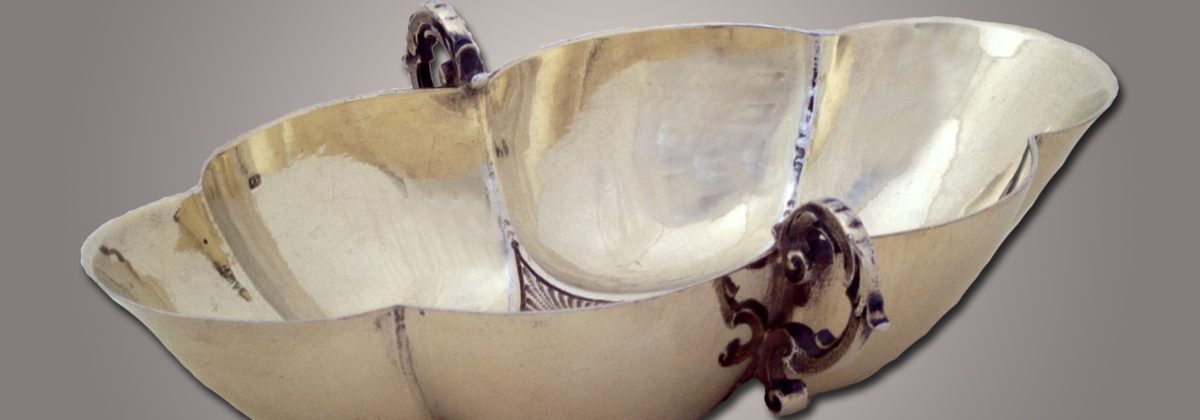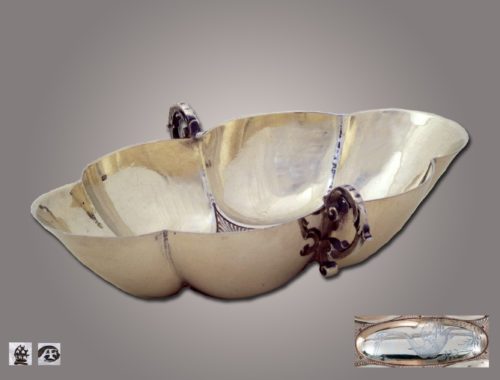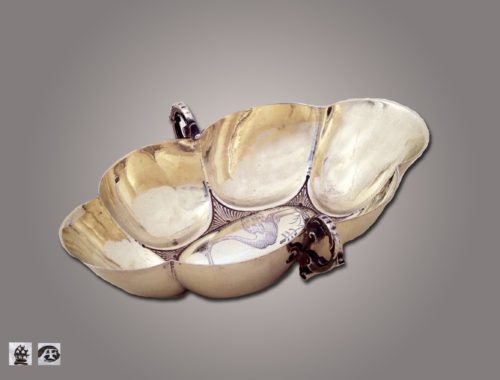Detailed Information
Silver-Gilt German Drinking Bowl
The present, silver-gilt drinking bowl is six lobed and elongated, oval-shaped. On the two long sides, the ear-shaped handles are attached vertically between two lobes. In the inside, the gussets between the humpbacks are chased. On the bottom, a stylized, stippled bird is standing between plants, most probably it being a grey heron standing at the bank of a river or lake.
Grey heron was since the Egyptians a symbolical animal. The Egyptians have connected it to phoenix and their solar deities. This connection was overtaken by the Greek and Romans and thus the bird is since then connected to phoenix who is re-born from its ashes. This old symbolism connects thus the grey heron to Christianity and the resurrection of Jesus Christ.
Besides this religious connotation, the grey heron was believed to be also a symbol of the chastity of Maria. Since the Middle Ages, the heron is finally used as a symbol of virtues (Castitas/Chastity, Constantia/Persistence, Spes/Hope). This is certainly to be seen in relation to the attitude of the bird while fish hunting.
The Silver Drinking Bowl
The drinking bowl is probably the oldest form of the drinking vessel, which has developed in analogy to the hollow hand as well as found natural vessel shapes. With a low edge and a large opening, as well as one or two handles, round or oval, it can be designed in various ways. Inside, it is mostly ornamentally engraved or provided with an elaborated embossing.
There is already evidence of silver drinking bowls during the Roman imperial period. It was mainly spread in the north and east of Europe. The drinking bowl was used for different purposes, but the main function was the enjoyment of drinking wine or brandy. Today, drinking bowls are popular collectors” items.
Maker
Adam Forster was a Protestant and became master maker in 1633. In the same year, he married for the first time. His second marriage took place in 1647. He died in 1668.
Literature
Karl Hernmarck: Die Kunst der europäischen Gold- und Silberschmiede von 1450-1830, München 1978.
Helmut Seling: Die Augsburger Gold- und Silberschmiede 1529 – 1868. Meister Marken Werke, München 1980 und 2007.
Hoffmann, Friedhelm, Phönix, Deutsche Bibelgesellschaft: https://www.bibelwissenschaft.de/wibilex/das-bibellexikon/lexikon/sachwort/anzeigen/details/phoenix/ch/94ec0a651dc76ba127d57039110aa703/ (last accessed: 16th July 2019).





